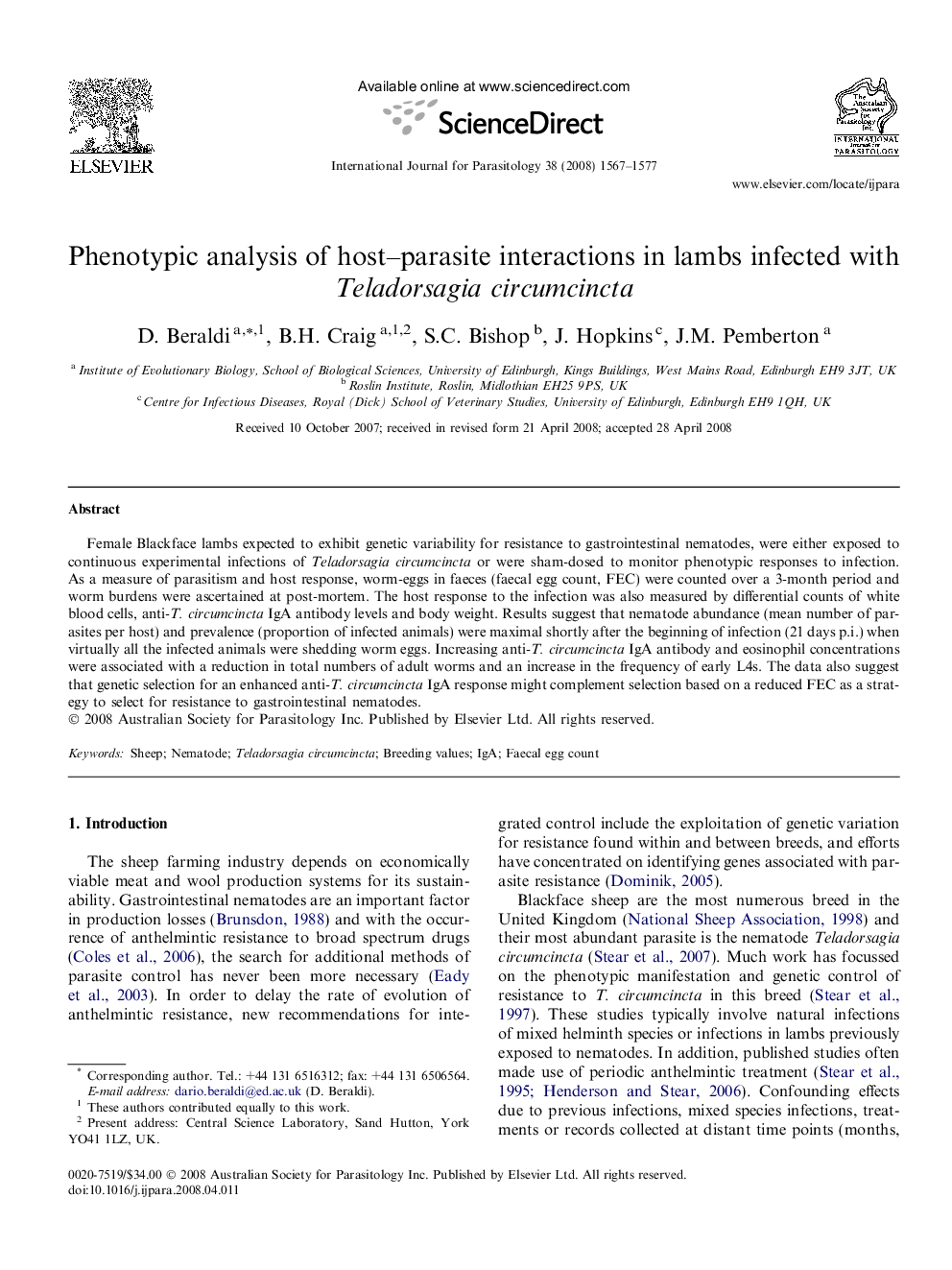| کد مقاله | کد نشریه | سال انتشار | مقاله انگلیسی | نسخه تمام متن |
|---|---|---|---|---|
| 2436502 | 1107317 | 2008 | 11 صفحه PDF | دانلود رایگان |

Female Blackface lambs expected to exhibit genetic variability for resistance to gastrointestinal nematodes, were either exposed to continuous experimental infections of Teladorsagia circumcincta or were sham-dosed to monitor phenotypic responses to infection. As a measure of parasitism and host response, worm-eggs in faeces (faecal egg count, FEC) were counted over a 3-month period and worm burdens were ascertained at post-mortem. The host response to the infection was also measured by differential counts of white blood cells, anti-T. circumcincta IgA antibody levels and body weight. Results suggest that nematode abundance (mean number of parasites per host) and prevalence (proportion of infected animals) were maximal shortly after the beginning of infection (21 days p.i.) when virtually all the infected animals were shedding worm eggs. Increasing anti-T. circumcincta IgA antibody and eosinophil concentrations were associated with a reduction in total numbers of adult worms and an increase in the frequency of early L4s. The data also suggest that genetic selection for an enhanced anti-T. circumcincta IgA response might complement selection based on a reduced FEC as a strategy to select for resistance to gastrointestinal nematodes.
Journal: International Journal for Parasitology - Volume 38, Issue 13, November 2008, Pages 1567–1577